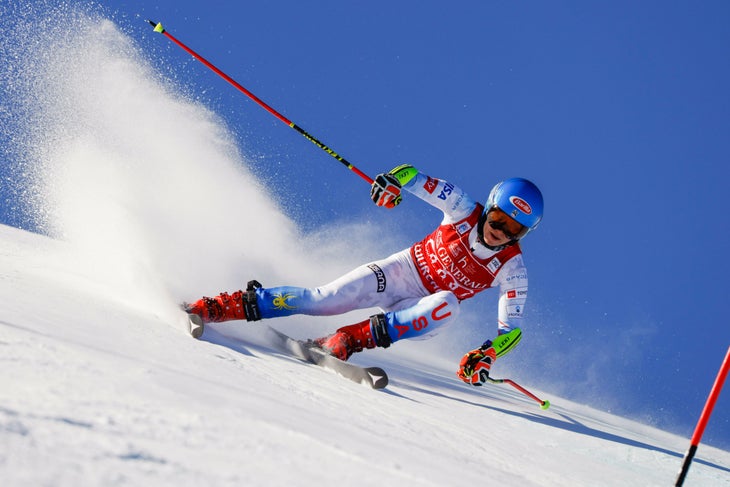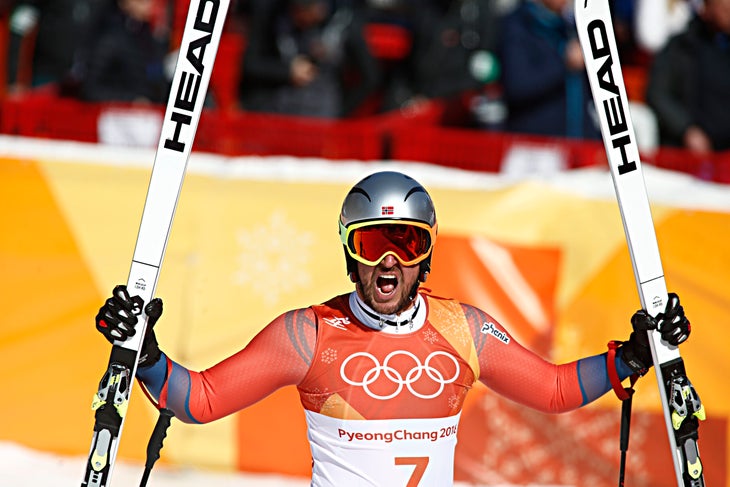Products You May Like
Every four years, when the Olympic frenzy subsides, the National Governing Bodies (NGBs) of sports engage in soul-searching or backslapping. This year, the U.S. Ski Team, after its worst performance since 1988, is in search mode. In addition to their souls, they are searching for a new Alpine Director, as Jesse Hunt announced last week he is stepping down from the position he has held twice, first from 2002-2009 and most recently since 2018.

In the aftermath of the Olympic performance, considering how professional sports roll, Hunt’s departure is not much of a surprise. It highlights the enormous task facing USSS CEO Sophie Goldschmidt, who stepped into her role last October. At the time, Goldschmidt pledged to make no changes until spring, and use the intervening time to educate herself on all the sports under the umbrella of U.S. Ski and Snowboard and to take stock of the organization.
In his post-Games editorial, Ski Racing Media’s editor Geoff Mintz summed up the landscape Goldschmidt faces, and sounded the alarm for U.S. Skiing: “The team needs to be stronger. We need less pressure (and less hype) on a select few.”
That last point was abundantly clear when Mikaela Shiffrin, in her five individual and one team event, failed to win any of the medals that almost seemed inevitable. Had Shiffrin delivered on the lofty expectations, it would merely have masked the dire reality faced by U.S. Skiing, where so much has been invested in the top of the pyramid at the expense of developing its base. Other country’s medals distributions tell the tale: The five gold medals won by the Swiss (9 total) came from five different skiers; Austria’s six individual medals (seven with the team event) were won by four athletes; Italy managed four medals from three athletes; France’s three medals came from three separate athletes, with a 17-year age range between them. All of these countries invested in a wide variety of talent, across all events, to carry their teams.
Check Out SKI’s Full Coverage of the 2022 Beijing Olympics
Paying the Price
When Hunt first assumed the role, he presided over an era of riches, with superstars like Julia Mancuso, Lindsey Vonn, Bode Miller, Ted Ligety, and Daron Rahlves providing star power and depth. It also, however, was a time when the national team adopted a “pay to play” model, requiring athletes below the A Team level to pay up to $35,000 per year to be on the team.
By the time Hunt took the reins in the spring of 2018, under the leadership of Tiger Shaw, those fees had been significantly reduced and were ultimately eliminated. Development, however, continued to suffer. After the 2018 Olympics, the entire World Cup Slalom team was cut, as the team focused resources on the athletes who were already at the very top or who met a strict age-based criteria that systematically ousted veteran athletes—this in a sport that favors experience (Britain’s David Ryding and Austria’s Priska Nufer won their first World Cups this season, at age 35 and 30 respectively). The repercussions of these policies were fully realized in Beijing, where the U.S. men’s team fielded only one skier in the slalom, and none in the Alpine Combined.

A now standard component of the Olympic news cycle are stories regaling the success of Norway, a country of 5.4 million, which once again topped the Winter Olympics medal count. They do it through a philosophy that encourages diverse athletic development in many sports, discourages early specialization and prioritizes fun and the love of sport. Rather than focusing on medals and fame, they emphasize things like hard work, spirit, and pride. The success of this approach speaks for itself. In Beijing, Norway won 37 medals. Even with many of their star athletes under-performing they managed four alpine medals.
Many stakeholders in U.S. Skiing hope that the NGB can capture some Norwegian magic by shifting from a narrow focus on “medal capable” athletes, identified and selected at a young age, to a broader perspective that acknowledges our country’s larger and more diverse talent pool.
Looking Ahead and Looking Around
At the club level, this means keeping kids in the sport past age 15, where participation drops precipitously. When Program Director Eric Price first came to New Hampshire’s Franconia Ski Club (FSC) in 1998 there were 40 kids in the club. Today there are 205, and the club brims with energy, enthusiasm, and talent. FSC is thriving, and its coaches preach a philosophy very similar to Norway’s, stressing, above all, the love of skiing. They push for more freeskiing and fundamentals, and less travel and racing, thereby keeping the costs down and the fun factor high.
For Price, the new USSS Alpine Director could help support their mission by reinforcing those same values, rather than engaging in talent selection based on early achievement, which ramps up both the cost of participation and the pressure, effectively deselecting kids from the sport. “It’s in print every four years,” says Price, referring to Norway’s success model. “Well, let’s act on it.”
On the other end of the age spectrum for development opportunity are collegiate athletes. Countries like Canada and Norway have essentially leveraged the NCAA system—which is unique to this country— to keep more elite athletes racing longer, at a high level. Dartmouth College women’s coach John Dwyer hopes the next Alpine Director is open-minded to collegiate athletes who fall outside of the age-based criteria. “I’d like to see someone who listens to all constituents, and is willing to have conversations,” says Dwyer, who, like other college coaches has been frustrated by the lack of cooperation and action by the NGB to accept or foster development of college-aged athletes.
Related: After Another DNF in Alpine Combined, Mikaela Shiffrin Has One Last Medal Hope
On a crisp winter Saturday, the newly constructed FSC clubhouse is buzzing with activity, as kids head out to take training laps on the T Bar or catch the lift to blast freeskiing runs in the woods. This is the same mountain where Bode Miller’s parents dropped him off every morning for their version of daycare, and you can imagine the next free-spirited, adventure-loving Bode Miller or Julia Mancuso darting around amidst this crew. He or she just needs this environment, encouragement, and time.
“This is a marathon, not a sprint,” says Price, whose grassroots perspective might be good advice for the U.S. Ski Team’s next Alpine Director: “You’re never going to get anybody else to come up if you always focus on the top kids.”
